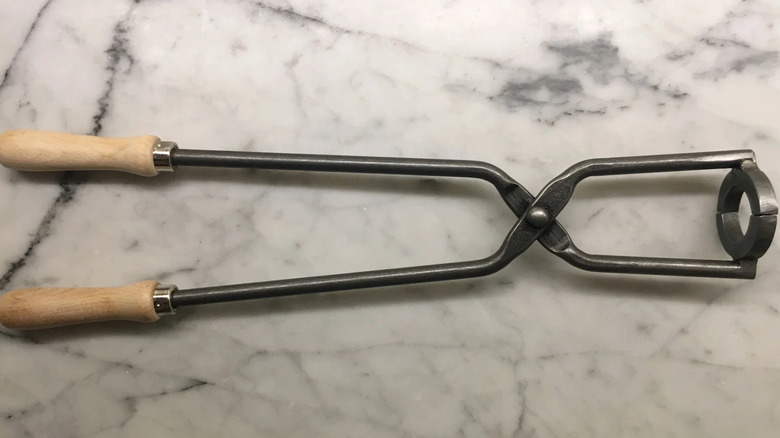What Are Port Tongs And How Do You Use Them?
Port tongs have a long and fascinating history that dates back to the early days of port wine production. But for those who are just learning about them, these special tongs are a traditional tool used to open and serve port wine. These types of tongs have long metal handles with a hollow half-circle at the end of each tong handle. When the tongs are closed, they form a full circle that can easily clamp around the neck of a port wine bottle. Ultimately, the tongs are heated up and then used to extract the port from the bottle.
In the early-18th century, port wine was shipped from Portugal to England. When the wine arrived, it was sold to consumers. However, the long journey from Portugal to England could cause sediment to form in the bottle, which would affect the taste and quality of the wine. Older ports could also be sealed with a disintegrating cork.
To remove the sediment, port tongs were invented. The tongs would be heated up in a fire until they were red hot, then they would be clamped around the neck of the bottle and used to cleanly sever the glass. The hot tongs would break the bottle, opening the bottle without worrying about an old cork breaking or crumbling into the wine if a corkscrew had been used. Finally, the port would then be poured out of the bottle, leaving the sediment behind.
How port tongs are used
Today, port tongs are mostly used for ceremonial purposes or sheer presentation. They are often used to open a bottle of vintage port, which is a special occasion wine. This ritual is similar to sabering champagne, where a sword is used to open a bottle of champagne. Both port tongs and sabering champagne are impressive displays of skill and tradition, adding dramatic and celebratory flare.
While it is very important that only skilled people should attempt to use port tongs on their own, it can be done. Make sure the tongs are red-hot and that you have prepared a safe place to put them while they cool down. After pressing the hot port tongs to the wine bottle's neck, use an ice-cold, damp cloth to finish making the clean break through the glass — this sudden change in temperature breaks the glass cleanly.
While it's possible to decant the port without pouring sediment into the glass, some choose to pour the wine over a cheesecloth-lined sieve. This helps to catch any fragments of glass that could have fallen into the wine.
So, whether you're a port enthusiast or just appreciate the history and tradition of wine culture, port tongs are a fascinating tool with a rich and storied history.

